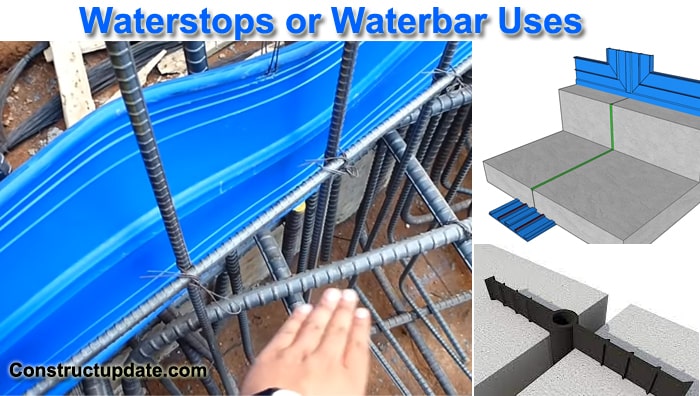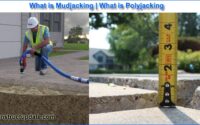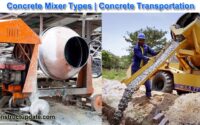What is Waterstops or Waterbars | Waterbar Uses Purpose | Waterbars Types
What are waterstops?
Waterstops are hydrophilic or impermeable strips that are cast into the concrete joints to prevent water from passing through.
Waterstops, also known as waterbars, are flexible tape-like features of concrete structures that prevent water from passing through seams. Seepage is particularly common in concrete joints. They’re made up of fluid-tight diaphragms that are embedded in or run along the joints. The connection is watertight, just like the waterbar that connects them.
Joints are unavoidable in large concrete structures such as retaining walls, basements, reservoirs, and tunnels. It could be structure, expansion joints, or a combination of the two. A waterbar is required for joints that are in direct contact with water. They are hydrophilic or impermeable strips that are cast into the concrete joints to prevent water from passing through.
Waterstops installed in the centre of the slab provide an effective barrier against water penetration from either the slab’s face or a wall. Before pouring concrete, it should be carefully secured in the formwork. Externally installed waterbars, on the other hand, are simple to secure by nailing through the “outboard” flange. These prevent water from entering the structure from the outside. External waterstops are commonly employed in the building of piled wall basements.

Various Types of Waterstops:
The following major types of waterstops can be used in construction, depending on the application and product availability. Waterbar is most commonly supplied by Fosroc and Sika. The type of structure, level of exposure, and construction manner all influence which waterstop to choose. Water stops come in a variety of shapes and materials.
PVC Waterstop
Because PVC waterstop is incorporated in concrete joints, it works as a continuous watertight diaphragm, preventing liquid seepage in hydrostatically pressured construction joints. It’s made for expanding or contracting joints, but it can also support lateral and transverse movements, making it suitable for moving joints.
Extruded from high-grade polyvinyl chloride, specific resin, and chemical additives such as plasticizers and stabilisers, the PVC waterstop is an elastic plastic substance.
HDPE Waterstop
HDPE Waterstop is a rubber ring that is clamped around the perimeter of the pipe to prevent infiltration and exfiltration between the HDPE Waterstop and the pipe. It is then either grouted into an existing structure or surrounded by new construction.
TVP Waterstop
This is constructed of a rubber and plastic mixture. Waterstops made of TVP are simple to buttweld. It has great dynamic fatigue resistance, high elasticity, and long-term temperature change resistance. Furthermore, TVP is eco-friendly and has excellent weather and UV resistance.
Rubber Waterbar
This form of waterstop accommodates large movements well, compensates for subsidence and seismic movements, and has been proved to endure high hydrostatic pressure. Its use is good for joints with a lot of mobility.
Applications of Waterstops or Waterbars
Waterstops are waterproofing materials used in the construction sector. Waterbar is used in the water and transportation industries to improve construction quality. Common structural applications are in:
- Projects involving water and sewage disposal.
- Containment of liquids.
- Dams, rivers, tunnels, and tanks are all examples of infrastructure.
- Locks and box culverts
- Structures for primary and secondary confinement.
- Abutments for bridges and decks.
- Slabs and a wall
- Basements and foundations are two types of structures.
Related Posts

What is Polyjacking | Benefits of Polyjacking in Construction | Mudjacking and Polyjacking Similarities

Beam Design Reinforcement Details – Reinforcement Detailing Beam

Concrete Mixer Types | Concrete Mixer Specification and Transportation
About The Author
John Steffen
I love to share my experience on civil engineering and construction estimates. As a highly capable individual with a strong academic background, I am proud to say that I already possess a comprehensive understanding of the technical elements of civil engineering.


